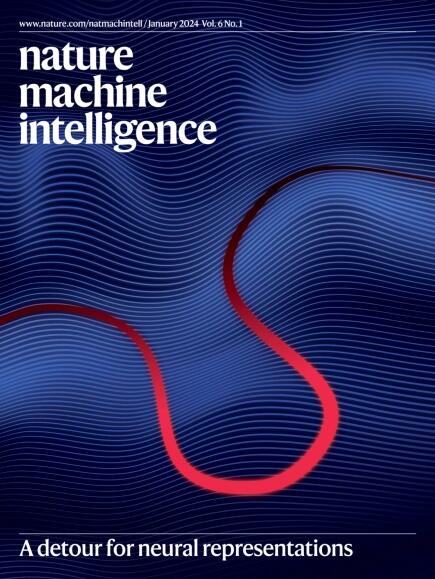类人对象概念表示在多模态大型语言模型中自然出现
IF 23.9
1区 计算机科学
Q1 COMPUTER SCIENCE, ARTIFICIAL INTELLIGENCE
引用次数: 0
摘要
理解人类如何概念化和分类自然物体提供了感知和认知的关键见解。随着大型语言模型(llm)的出现,一个关键问题出现了:这些模型能否从语言和多模态数据中开发出类似人类的对象表示?在这里,我们结合行为和神经影像学分析来探索llm中物体概念表征与人类认知之间的关系。我们从llm和多模态llm中收集了470万个三重判断,以获得捕获1854个自然物体相似结构的低维嵌入。所得到的66维嵌入是稳定的、可预测的,并表现出类似于人类心理表征的语义聚类。值得注意的是,这些嵌入的维度是可解释的,这表明llm和多模态llm开发了类似人类的对象概念表示。进一步分析表明,模型嵌入与脑区(如体外区、海马旁区、脾后皮层和梭状面区)的神经活动模式有很强的一致性。这提供了令人信服的证据,证明llm中的对象表示虽然与人类的不相同,但具有反映人类概念知识关键方面的基本相似性。我们的发现促进了对机器智能的理解,并为开发更像人类的人工认知系统提供了信息。本文章由计算机程序翻译,如有差异,请以英文原文为准。


Human-like object concept representations emerge naturally in multimodal large language models
Understanding how humans conceptualize and categorize natural objects offers critical insights into perception and cognition. With the advent of large language models (LLMs), a key question arises: can these models develop human-like object representations from linguistic and multimodal data? Here we combined behavioural and neuroimaging analyses to explore the relationship between object concept representations in LLMs and human cognition. We collected 4.7 million triplet judgements from LLMs and multimodal LLMs to derive low-dimensional embeddings that capture the similarity structure of 1,854 natural objects. The resulting 66-dimensional embeddings were stable, predictive and exhibited semantic clustering similar to human mental representations. Remarkably, the dimensions underlying these embeddings were interpretable, suggesting that LLMs and multimodal LLMs develop human-like conceptual representations of objects. Further analysis showed strong alignment between model embeddings and neural activity patterns in brain regions such as the extrastriate body area, parahippocampal place area, retrosplenial cortex and fusiform face area. This provides compelling evidence that the object representations in LLMs, although not identical to human ones, share fundamental similarities that reflect key aspects of human conceptual knowledge. Our findings advance the understanding of machine intelligence and inform the development of more human-like artificial cognitive systems. Multimodal large language models are shown to develop object concept representations similar to those of humans. These representations closely align with neural activity in brain regions involved in object recognition, revealing similarities between artificial intelligence and human cognition.
求助全文
通过发布文献求助,成功后即可免费获取论文全文。
去求助
来源期刊

Nature Machine Intelligence
Multiple-
CiteScore
36.90
自引率
2.10%
发文量
127
期刊介绍:
Nature Machine Intelligence is a distinguished publication that presents original research and reviews on various topics in machine learning, robotics, and AI. Our focus extends beyond these fields, exploring their profound impact on other scientific disciplines, as well as societal and industrial aspects. We recognize limitless possibilities wherein machine intelligence can augment human capabilities and knowledge in domains like scientific exploration, healthcare, medical diagnostics, and the creation of safe and sustainable cities, transportation, and agriculture. Simultaneously, we acknowledge the emergence of ethical, social, and legal concerns due to the rapid pace of advancements.
To foster interdisciplinary discussions on these far-reaching implications, Nature Machine Intelligence serves as a platform for dialogue facilitated through Comments, News Features, News & Views articles, and Correspondence. Our goal is to encourage a comprehensive examination of these subjects.
Similar to all Nature-branded journals, Nature Machine Intelligence operates under the guidance of a team of skilled editors. We adhere to a fair and rigorous peer-review process, ensuring high standards of copy-editing and production, swift publication, and editorial independence.
 求助内容:
求助内容: 应助结果提醒方式:
应助结果提醒方式:


